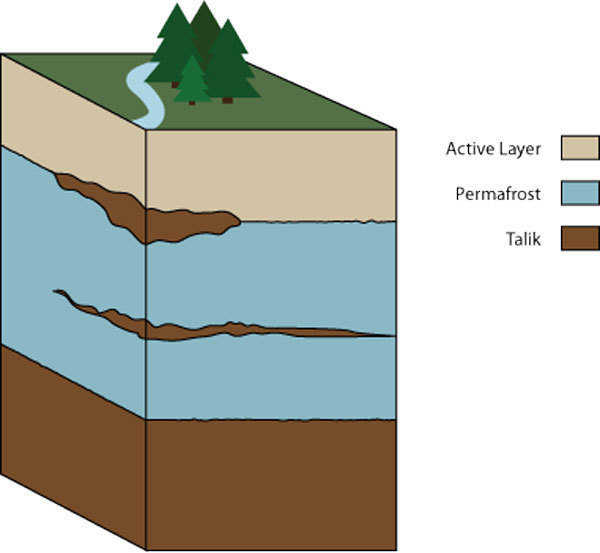Permafrost is something most of us don’t ever have to worry about. In some parts of the United States, such as Florida, South Texas, Southern California and Arizona, the ground never freezes. You go further north and the ground only freezes a foot deep during the coldest winter months. But as you travel north, the ground may freeze two or three feet, then five or six feet.
As the ground freezes, it creates trouble for buildings sitting on it. As everyone knows – or should know – when water freezes it expands. It’s the only liquid that does so. It is the water in the ground, not the dirt, that actually does the freezing and the expanding.
And that expansion of the ground can be pretty severe. If you don’t want it expanding under your home’s foundation, lifting one part of your house higher than another, you must keep it from happening.
The old way was to build foundations that went down below the frost level. In other words, foundations went far enough down into ground that wouldn’t freeze. The fact is we are using the upper part of the ground to insulate the deeper ground, so that we don’t get frost heaves under the home’s foundation.
Today’s technology also allows us to insulate the earth to keep it from freezing below a building. But if you don’t want your building walking around, you have to take care of it one way or the other.
Far north areas, such as upper Alaska, have ground that has frozen so deeply for so long it will never totally thaw. We call those areas permafrost, since they are permanently frozen.
Now let’s make the problem a little more complex. Much of the area that has permafrost warms in the summer so that the ground above the permanently frozen area thaws. Then when it gets cold again, it refreezes. So you have a see-saw effect: as the surface ground warms and thaws, it shrinks; when it refreezes, it expands.
Consequently, we have a dilemma. The ground that is 20 feet or deeper remains permanently frozen and does not change in size or dimension. But the top layers see-saw; they thaw/shrink and refreeze/expand.
In the summer, water produced by the thawing stays on top because the permafrost won’t let it percolate down. That creates muskegs – swamps or bogs with water, dead vegetation and moss. Generally, it doesn’t get hot enough for that water to evaporate. It just gets warm enough for some thawing. In that situation, we get a huge amount of mud. That mud refreezes in the winter. When that mud freezes, the water in it expands, and that expansion causes the ground to shift. Therefore, we have to be very careful how we deal with permafrost.
Some of the first gold miners in the Yukon learned about this problem the hard way. When the ground starts to freeze and expand, it gets compressed between the permafrost on the bottom and the newly freezing ground on the top. The slushy mud in the middle compresses and looks for a place to expand. The miners had built little log cabins that protected the surface from freezing. But that same protection let the mud break through the floor and quickly fill the cabins. Some miners became trapped and killed as the cabins rapidly filled with mud.
In permafrost country, structures must either be built on pilings or have cold spread under them to keep the frozen ground from thawing.
When Monolithic builds in permafrost areas, we put the dome on pilings. Monolithic Cabins are ideal for this. Larger Monolithic Domes generally require large pilings and are built on thick gravel with air tubes in the gravel. The gravel stays dry and the air tubes carry the freezing wind under the buildings, letting the earth under the dome freeze.
It does get complicated up north!
